When going to the Rubin Museum to see Steve McCurry’s exhibition, I was very excited. I discovered this photographer randomly about two years ago when I started developing a passion for photography. I was staying in Sevilla for about a week and decided to take a one day trip to Sienna. As I was walking through the streets of Sienna, I came across a poster advertising his exhibition on the Plazza Central. And, of course, the image that was on the poster is what drew my attention: it was the portrait of the young Afghan girl, which I had seen many times on the cover of National Geographic.
And, frankly I did not know any of McCurry’s other pieces except for this extremely famous one. So, I decided to go inside and take a look at the exhibition. I ended up falling in love with McCurry’s style especially his very sophisticated and unique touch when shooting portraits. And, I equally appreciated his portraits at the Rubin museum. I find them absolutely stunning and very truthful to the Indian culture he is depicting. However, I was weirdly disappointed by his exhibition at the Rubin. Of course, I already had seen some of his photos at the museum in Sienna. However, I discovered some new ones at the Rubin. But his style, with very saturated images, just seems very linear; almost plain.. After studying photographers like Ashley Gilbertson who’s art is so diverse, I was very disappointed by McCurry’s commerciality. Ash depicted one conflict in so many different ways: not only up front with the soldiers in the midst of action through Whiskey Tango Foxtrot, but also back home through his Bedrooms Of The Fallen. And, I think that it requires the photographer to have a lot of talent and courage to present such diverse pieces. After seeing this, McCurry’s art just seems very easy in a way that it is so logical and predictable. It follows a very linear thread. I expected to maybe be surprised at the Rubin, even though I recognized and appreciated the beauty of the images.
Also, the fact that the images were printed so huge added to my disappointment. If I saw McCurry’s images in a magazine, they would probably not impact me as much as they did at the Rubin or in Sienna. On another hand, Ash’s photos impacted me immensely even though I was holding them in my hands. The staging and scale that McCurry chose is again maybe a little bit easy. It is very impressive, especially the first time that you see them, but I don’t think that they would not be as powerful in a small format. But, I am going to contradict myself here by saying that portrait of the Afghan girl on the cover of the National Geographic left a huge impact on me even though it was printed on a magazine format. I found it interesting to see the differences between the two exhibitions. In Sienna, some small prints were covering the walls of a huge round room. It was very impressive and overwhelming at first as a general feeling, but then when I walked out of this room I realized that I actually did not remember the images exposed. I actually only remember two of them, that really impacted me, and they both involved a child.
I am also oddly conflicted when calling McCurry a photojournalist. His images portray a culture in a very beautiful way, however what do we learn? What events do they report? Although I know that it is incorrect, I tend to want to call his pictures art photography more than photojournalism.
In an interview, McCurry said that he was brought to India because “it was a place (he) had never been before and wanted to explore”. This is very interesting to me as it seems like the purpose of this trip was kind of selfish in a way. He wanted to experience something, a new culture in order to create a story, which would ultimately be his story of India. Ron Haviv said in one of his essays that to him photojournalism was absolutely not about him but about the people he photographed. So, does McCurry go against Haviv’s idea? I am not entirely sure. It is ambiguous as McCurry also says that before going to India he was mainly shooting black and white photgraphy. However, in India, he discovered that most of the culture and the Hindu religion revolved around color. Therefore, he shot his album in color in order to be truthful to the culture and the people of India. McCurry changed his ways in order to respect his subjects.
McCurry also explains how he fell in love with the Kashmir region and the Indian culture. Therefore, it makes sense that he wanted to represent it as a beautiful ensemble. Here again, we have this idea of ‘his vision’ of India. How accurate is it? The colors are vibrant and so over saturated that sometimes it seems like the scene is unreal. For example, how accurate is the image of the Blue City?
Is it normal that I doubt the legitimacy of a photojournalist’s work? I think that means that part of his job as a photojournalist is not completed correctly in my eyes. However, the image is esthetically stunning but again leads me to think that it is more art photography than photojournalism.
But, some other images from McCurry’s India portfolio brought back that real India that I was looking for. He shows the level of poverty and the harsh living conditions that people suffer from, but still, he makes every shot esthetically pleasing. I understand that as a photographer, esthetic is extremely important as you want people to look at your photo. As Ron Haviv said when he shot the photo of a young girl walking through the desert after being exiled from her village and forcefully married to an older man, “the most important thing is that the photo is pleasing to the eye”. If it is, then people will stop, look at the image, read the caption and therefore learn about the story behind the shot and about the human rights’ cause that is highlighted and that needs to be talked about. Beauty in a way is used by photojournalists as a mean to raise awareness and educate the population.
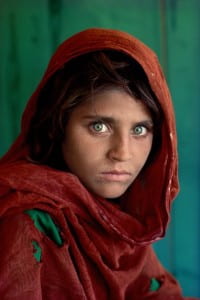
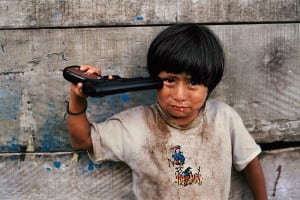
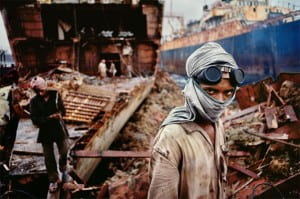
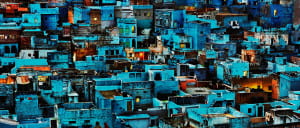
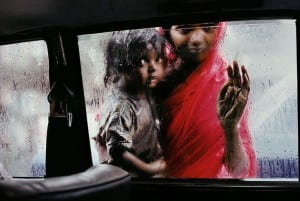
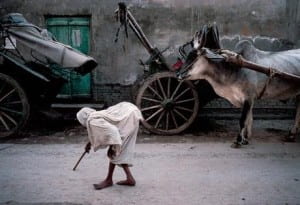
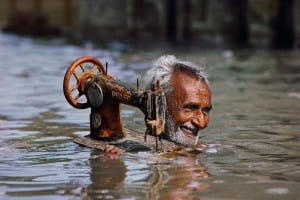
Leave a Reply
You must be logged in to post a comment.